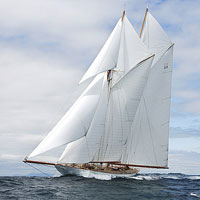 “Super yachts” rarely impress me. Russian billionaire, Roman Abramovich’s megayacht, “Eclipse,” may be the largest private yacht now sailing but it is, to my eye at least, a bit boring. It may be over 550 feet long and cost a bazillion rubles, but so what?
“Super yachts” rarely impress me. Russian billionaire, Roman Abramovich’s megayacht, “Eclipse,” may be the largest private yacht now sailing but it is, to my eye at least, a bit boring. It may be over 550 feet long and cost a bazillion rubles, but so what?
The new Schooner Elena on the other hand is both breathtaking and a resurrected bit of history. The first Elena was built for New York’s Morton Plant in 1911 by Nathaniel Herreshoff. She was beautiful and the fastest yacht of her day, winning races for years including the 1928 Trans Atlantic King’s Cup from New York to Santander.
Continue reading

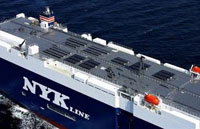

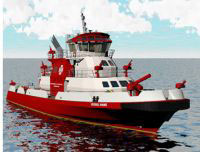 From
From 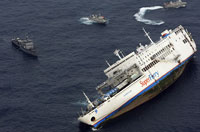 I’ve always been struck by the tragedy that those most in need of ferry service are often also most at risk. We have seen recent ferry accidents in the Philippines with the sinking of the
I’ve always been struck by the tragedy that those most in need of ferry service are often also most at risk. We have seen recent ferry accidents in the Philippines with the sinking of the 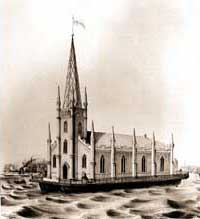 If you can’t get sailors to church, bring the church to the sailors. That was the strategy used in 1844 by the Protestant Church Missionary Society for Seamen, which was renamed the
If you can’t get sailors to church, bring the church to the sailors. That was the strategy used in 1844 by the Protestant Church Missionary Society for Seamen, which was renamed the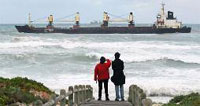
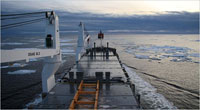
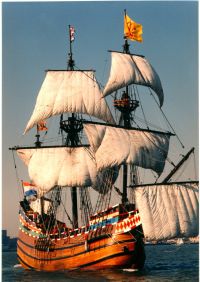 Today there are 1.6 million or so residents on the island of Manhattan. How things have changed. Four hundred years ago on September 12th, 1609, when Henry Hudson first stepped onto the island, there were roughly 600 Lenape Indians living there. The natives called the island Manna-hata, as recorded in the 1609 logbook of Robert Juet, an officer on Hudson’s ship, Half Moon. Manna-hata is translated from the Lenape to mean the “island of many hills.”
Today there are 1.6 million or so residents on the island of Manhattan. How things have changed. Four hundred years ago on September 12th, 1609, when Henry Hudson first stepped onto the island, there were roughly 600 Lenape Indians living there. The natives called the island Manna-hata, as recorded in the 1609 logbook of Robert Juet, an officer on Hudson’s ship, Half Moon. Manna-hata is translated from the Lenape to mean the “island of many hills.”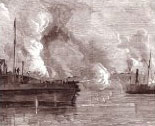 Last February, we posted about
Last February, we posted about 
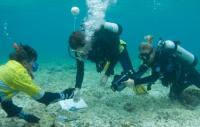 We recently posted about how
We recently posted about how  In the aftermath of the fire in 1934 on the passenger liner Morro Castle, in which 135 passengers and crew died, there was considerable blame to be shared. The ship’s safety equipment was poorly maintained, the crew poorly trained and the ship’s officers made several questionable decisions which may have contributed to the rapid spread of the fire. How the fire started has never been determined. One man, George White Rogers, a radio officer, would be held up as hero. He stayed at his station transmitting “SOS” despite intense heat and smoke in the radio room.
In the aftermath of the fire in 1934 on the passenger liner Morro Castle, in which 135 passengers and crew died, there was considerable blame to be shared. The ship’s safety equipment was poorly maintained, the crew poorly trained and the ship’s officers made several questionable decisions which may have contributed to the rapid spread of the fire. How the fire started has never been determined. One man, George White Rogers, a radio officer, would be held up as hero. He stayed at his station transmitting “SOS” despite intense heat and smoke in the radio room.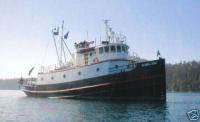 Thanks to Dave Shirlaw on MARHST-L for pointing out a fascinating vessel for sale on E-Bay. The vessel is a steel tug, ST 893, built by JK Welding of Brooklyn, NY in 1945. The tug is said to have served in Normandy, the South Pacific, Korea, and Vietnam, and has been converted to a live-aboard yacht. As of this writing , there are no bids.
Thanks to Dave Shirlaw on MARHST-L for pointing out a fascinating vessel for sale on E-Bay. The vessel is a steel tug, ST 893, built by JK Welding of Brooklyn, NY in 1945. The tug is said to have served in Normandy, the South Pacific, Korea, and Vietnam, and has been converted to a live-aboard yacht. As of this writing , there are no bids.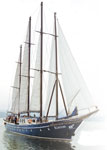 An interesting article from
An interesting article from 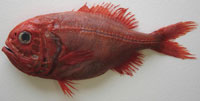 Which would you prefer to order from the menu – slimehead or orange roughy? Antarctic toothfish or Chilean sea bass? Slimehead and orange roughy are the same fish, just as the Chilean sea bass is the Antarctic toothfish with a new name. Orange roughy just sounds so much better on the menu or in the supermarket than slimehead. The same goes with Chilean sea bass, which doesn’t happen to be related to sea bass at all, but the name is appealing.
Which would you prefer to order from the menu – slimehead or orange roughy? Antarctic toothfish or Chilean sea bass? Slimehead and orange roughy are the same fish, just as the Chilean sea bass is the Antarctic toothfish with a new name. Orange roughy just sounds so much better on the menu or in the supermarket than slimehead. The same goes with Chilean sea bass, which doesn’t happen to be related to sea bass at all, but the name is appealing.